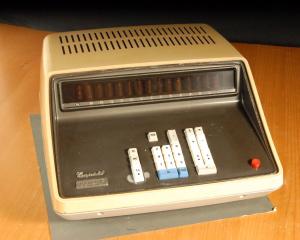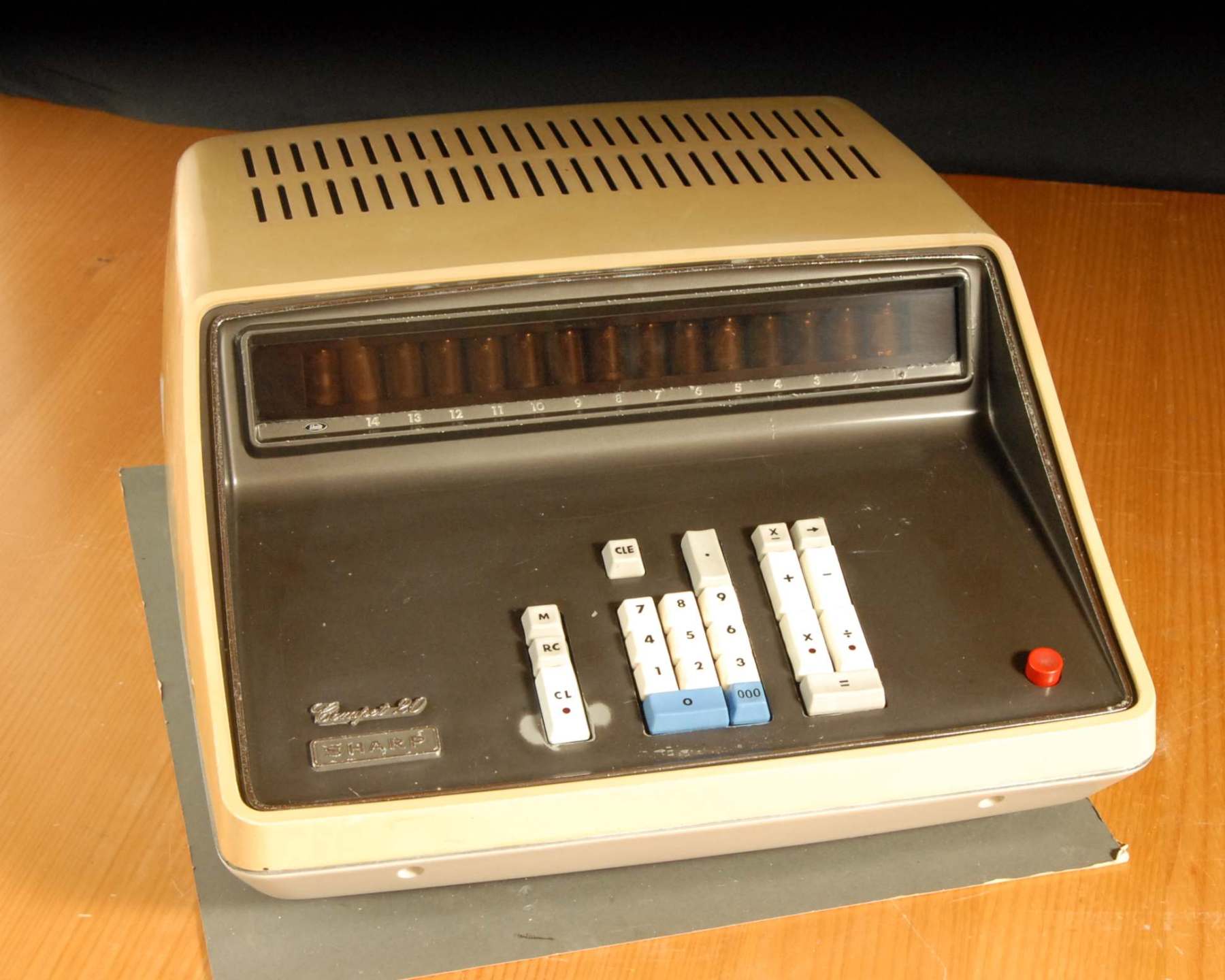Sharp Calculators - Overview
“Sharp” was a trade name of the Hayakawa Electric Industry Company. The company was established in Tokyo by Tokuji Hayakawa and its first successful product was an “ever-sharp pencil” which led to the trade name of “Sharp”. The company produced radios in the 1920s and 30s, and produced television receivers in the 1950s.
By 1960 the Hayakawa company decided to develop an electronic calculator, perhaps motivated by the success of Casio’s Model 14-A electromechanical calculator of the late 1950s.
The Hayakawa calculator development progressed slowly and with difficulty but finally in 1964 the Sharp Compet CS-10A was released in Japan. It was successful, and in 1965 it was replaced by the Compet CS-20A which had commenced development in parallel with the CS-10A and contained many improvements derived from the experiences of the CS-10A development team.
Sharp CS-20A
The Compet CS-20A is a first generation all-transistor machine.
It has a 10-key keyboard and Nixie display. The keyboard layout is unusual by modern standards and probably reflects the fact that in the early 1960s the 10-key keyboard was still evolving as a replacement for the full comptometer style.
OEM Calculators by Hayakawa / Sharp
Hayakawa was evidently eager for sales and very soon after establishing its own calculator business it began to enter into OEM arrangements.
One early arrangement was for complete CS-20A machines to be sent to Australia where the local agent Olims Electronics (cheekily) affixed a “Manufactured by Olims Electronics” sticker to the back before selling them. The CS-20A on this site will be seen to have such a sticker.
Further, more typical OEM agreements followed, where Hayakawa would manufacture machines with cases and badges to suit OEM customers including:
- Burroughs
- Facit
These machines will generally be marked “Made in Japan” and sometimes the model numbers will be of a “Hayakawa - style” but otherwise there is usually no external indication of Hayakawa origin. The circuit boards in these machines will however be found to have the Hayakawa name or logo.
Hayakawa / Sharp continues in the calculator business
Sharp continued to be in the forefront of calculator research and development and this may be an important part of its continued success to this day in a very competitive market.
Sharp pursued technological innovation from the beginning and sought to be at the forefront of IC development in the late 1960s. By the end of 1967 Sharp had used Japanese MSI chips to produce the Compet CS-16A which was a hybrid transistor/IC machine. This was a stepping stone to Sharp’s ambition for an LSI calculator built on a minimum number of chips. Japanese LSI manufacturing abilities could not keep up with this ambition and it was Rockwell in the US who produced Sharp’s first LSI chipset, enabling Sharp to release their first LSI calculator, the Compet QT-8D, in mid 1969.
Continued innovation kept Sharp near the front of the calculator manufacturing pack and Sharp has remained successful in the calculator business to this day.

